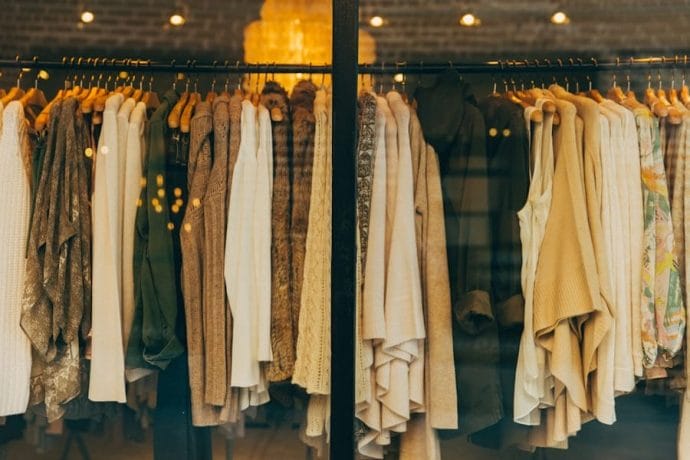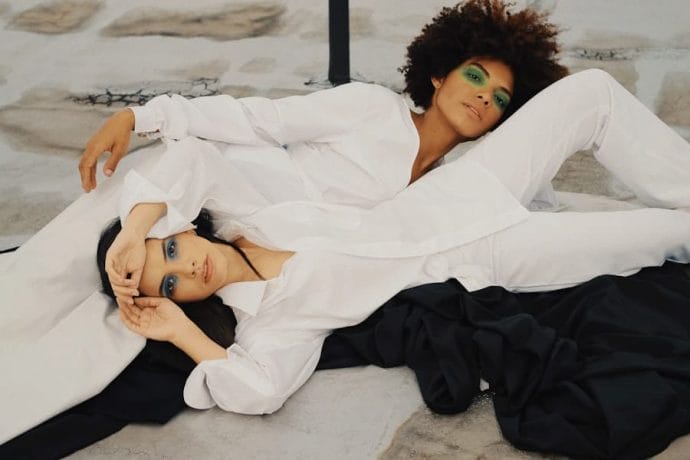Fashion 4 Women: Style That Speaks
Personal style is an intricate tapestry woven from various threads of individual identity, cultural influences, and personal preferences. It is not merely about the clothes one wears but rather a reflection of one’s personality, values, and lifestyle. Understanding personal style begins with introspection; it requires individuals to delve into their likes and dislikes, their comfort zones, and the messages they wish to convey through their attire.
For instance, someone who gravitates towards minimalist aesthetics may find solace in neutral colors and clean lines, while another person might express their vibrant personality through bold patterns and eclectic accessories. Moreover, personal style evolves over time, influenced by life experiences, societal changes, and even shifts in personal circumstances. A young professional may adopt a more polished look for the workplace, while a new parent might prioritize comfort without sacrificing style.
This fluidity is essential to recognize; it allows individuals to adapt their wardrobes to suit different phases of life while remaining true to their core aesthetic. By observing how personal style manifests in various contexts—be it casual outings, formal events, or everyday errands—one can begin to curate a wardrobe that genuinely reflects who they are. Visit the Fashion Shop for the latest trends and styles.
Key Takeaways
- Personal style is about reflecting your unique personality through clothing choices.
- A timeless wardrobe focuses on classic, versatile pieces that never go out of style.
- Incorporate trends selectively to keep your look fresh without compromising your core style.
- Dressing for your body shape enhances confidence and highlights your best features.
- Accessories and color experimentation allow for creative expression and individuality in fashion.
Building a Timeless Wardrobe:
A timeless wardrobe serves as the foundation of personal style, offering versatility and longevity that transcends fleeting fashion trends. The cornerstone of such a wardrobe is the classic pieces that can be mixed and matched effortlessly. Items like a well-fitted blazer, tailored trousers, a little black dress, and quality denim are essential staples that can be dressed up or down depending on the occasion.
These pieces not only provide a reliable base for any outfit but also allow for creative layering and accessorizing, making them indispensable in any fashion-savvy individual’s closet. In addition to classic staples, building a timeless wardrobe involves selecting high-quality materials that withstand the test of time. Investing in garments made from natural fibers such as wool, cotton, and silk can significantly enhance the longevity of clothing.
For example, a cashmere sweater may come with a higher price tag initially but offers unparalleled warmth and durability, making it a worthwhile investment. Furthermore, timeless pieces often feature neutral colors that can seamlessly integrate into any ensemble. Shades like navy, beige, and white provide a versatile backdrop for bolder accessories or statement pieces, ensuring that one’s wardrobe remains fresh and relevant regardless of changing trends.
Embracing Trends:

While a timeless wardrobe is essential for establishing a solid foundation in personal style, embracing trends can inject excitement and freshness into one’s fashion choices. Trends often serve as a reflection of cultural shifts and societal moods, providing an opportunity for individuals to experiment with new looks and ideas. However, it is crucial to approach trends with discernment; not every trend will resonate with one’s personal style or body type.
For instance, the resurgence of oversized silhouettes may appeal to some but could overwhelm others who prefer more fitted clothing. Incorporating trends into one’s wardrobe can be achieved through strategic choices that align with personal aesthetics. For example, if bold colors are trending but do not typically feature in one’s wardrobe, consider introducing them through accessories like scarves or handbags rather than committing to an entire outfit.
This approach allows for experimentation without straying too far from one’s established style. Additionally, mixing trendy items with classic pieces can create a balanced look that feels both current and timeless. A trendy patterned blouse paired with tailored trousers exemplifies how to embrace contemporary styles while maintaining an overall polished appearance.
Dressing for Your Body Shape:
Understanding one’s body shape is paramount in selecting clothing that flatters and enhances natural features. Different body shapes—such as hourglass, pear, apple, and rectangle—each have unique characteristics that can be accentuated through thoughtful styling choices. For instance, individuals with an hourglass figure may choose to highlight their waist with fitted dresses or belted tops, while those with a pear shape might opt for A-line skirts that skim over the hips while drawing attention to the waist.
Moreover, dressing for body shape extends beyond mere silhouette considerations; it also involves understanding proportions and balance. For example, someone with broader shoulders may choose to wear V-necklines to elongate the neck and create a more balanced appearance. Similarly, individuals with longer torsos might benefit from high-waisted pants that create the illusion of proportionate legs.
By recognizing and embracing one’s unique body shape, individuals can make informed choices that enhance their confidence and overall appearance.
Accessorizing with Confidence:
Accessories play a pivotal role in elevating any outfit from ordinary to extraordinary. They serve as the finishing touches that can transform a simple ensemble into a statement look. However, accessorizing requires a keen sense of balance; too many accessories can overwhelm an outfit while too few may leave it feeling incomplete.
The key lies in selecting pieces that complement rather than compete with the clothing being worn. For instance, if wearing a bold patterned dress, opting for understated jewelry can allow the outfit to take center stage. Confidence in accessorizing also comes from understanding how different accessories can alter the perception of an outfit.
A structured handbag can lend an air of sophistication to casual attire, while statement earrings can draw attention to the face and enhance one’s features. Experimenting with layering necklaces or stacking bracelets can add depth to an outfit without overwhelming it. Ultimately, accessorizing is about expressing individuality; whether through vintage finds or contemporary designs, the right accessories can reflect personal style and enhance self-assurance.
Finding the Perfect Fit:

The fit of clothing is arguably one of the most critical aspects of looking polished and put-together. Ill-fitting garments can detract from even the most stylish outfits; therefore, understanding how to find the perfect fit is essential for anyone looking to elevate their wardrobe. Tailoring is often the secret weapon in achieving this goal—investing in alterations can transform off-the-rack pieces into custom-fitted garments that flatter one’s unique shape.
For example, a simple adjustment to the hemline of trousers or taking in the sides of a blouse can make a significant difference in overall appearance. Additionally, understanding sizing across different brands is crucial since sizing can vary widely between manufacturers. It is advisable to try on multiple sizes and styles to determine what feels best rather than relying solely on size labels.
Moreover, being aware of one’s body measurements can aid in making informed purchasing decisions when shopping online. Ultimately, prioritizing fit over brand names or trends ensures that clothing not only looks good but also feels comfortable and confident.
Experimenting with Color and Patterns:
Color and patterns are powerful tools in fashion that can evoke emotions and convey messages without uttering a word. Experimenting with different hues allows individuals to express their moods and personalities creatively. For instance, vibrant colors like red or yellow can exude energy and confidence, while softer tones like pastels may evoke calmness and serenity.
Understanding color theory—such as complementary colors or analogous color schemes—can aid in creating visually appealing outfits that resonate with personal style. Patterns also offer an exciting avenue for self-expression; from florals to stripes to geometric designs, there are endless possibilities for incorporating patterns into one’s wardrobe. Mixing patterns can be particularly striking when done thoughtfully; pairing a floral blouse with striped trousers can create an eye-catching ensemble if balanced correctly through color coordination or varying scale sizes.
Additionally, incorporating patterns through accessories—such as scarves or shoes—can add interest without overwhelming an outfit. Ultimately, experimenting with color and patterns encourages creativity in fashion choices while allowing individuals to discover new facets of their personal style.
Expressing Individuality through Fashion:
Fashion serves as a powerful medium for self-expression; it allows individuals to communicate their identities and beliefs without saying a word. Embracing individuality through fashion involves celebrating uniqueness rather than conforming to societal norms or expectations. This journey often begins with self-discovery—understanding what resonates personally and what feels authentic when getting dressed each day.
For some, this may mean embracing vintage styles that reflect nostalgia; for others, it could involve adopting avant-garde looks that challenge conventional aesthetics. Moreover, expressing individuality through fashion often entails curating a wardrobe filled with pieces that tell a story or hold sentimental value. This could include heirloom jewelry passed down through generations or clothing purchased during significant life events.
By incorporating these meaningful items into daily outfits, individuals create a narrative that reflects their journey and experiences. Ultimately, fashion becomes more than just clothing; it transforms into an art form that celebrates diversity and individuality while empowering people to showcase their true selves confidently.




 Previous Post
Previous Post